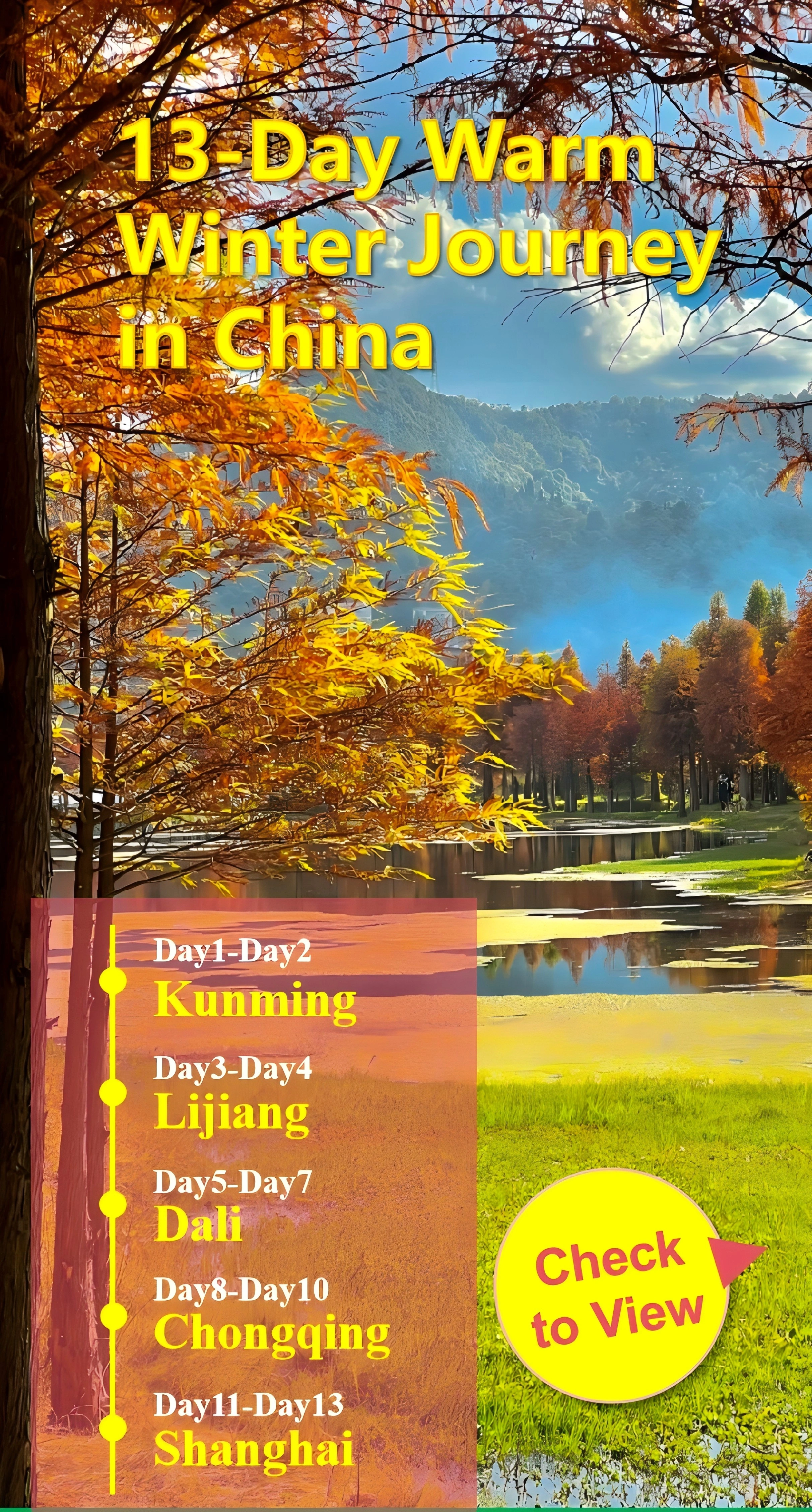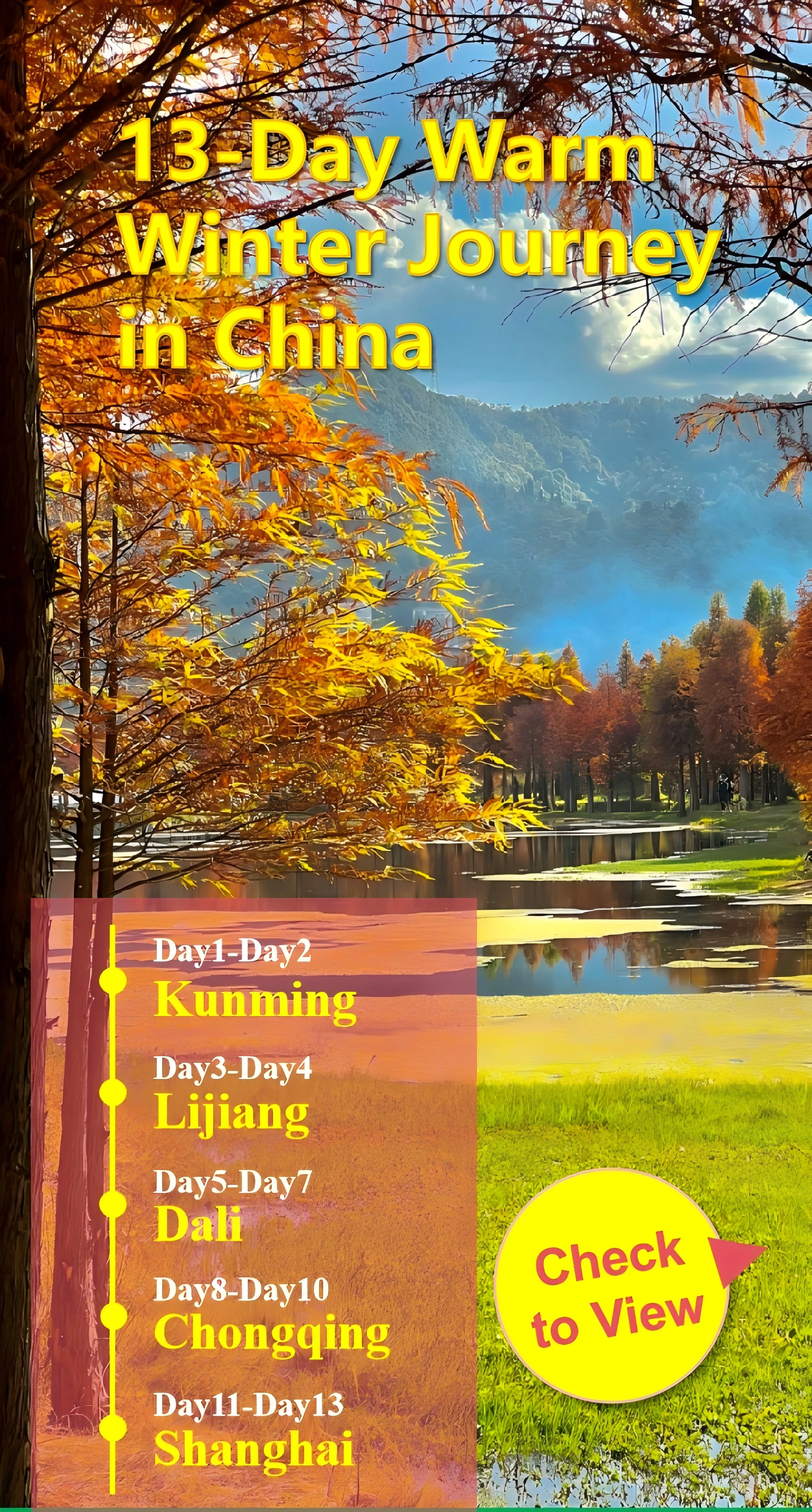Zhanghua Temple
Historical Overview
618 AD (Tang Dynasty): Initial construction as a small monastery, later expanded by Emperor Xuanzong.
1127 AD (Song Dynasty): Renamed "Zhanghua Temple" and became a center for Chan (Zen) Buddhism.
1368 AD (Ming Dynasty): The Nine-Story Pagoda was built, symbolizing the temple’s zenith.
1644 AD (Qing Dynasty): Emperor Kangxi gifted a 3-ton bronze bell, now housed in the Bell Tower.
1930s: Damaged during wars; restored in the 1950s and 1980s.
2010: Listed as a "National AAAAA Tourist Attraction" for its cultural and historical value.
Structural Layout
The temple is divided into three main zones:
1. West Zone (Religious Core)
Nine-Story Pagoda: A 54-meter-tall brick pagoda with intricate eaves and Buddha niches, offering panoramic views of Jingzhou.
Jade Buddha Hall: Home to a 2.6-meter-tall white jade Buddha from Burma, dating to the Qing Dynasty.
Bell Tower: Houses the "Dragon Bell," struck 108 times during New Year celebrations for good fortune.
2. Central Zone (Cultural & Pilgrimage)
Daxiong Hall (Main Sanctuary): Features a 12-meter-tall gilded Buddha statue and murals depicting the life of Shakyamuni.
Arhat Hall: Displays 500 lifelike clay arhat statues, each with unique expressions.
Ancient Banyan Grove: A 600-year-old banyan tree with aerial roots forming natural "curtains."
3. East Zone (Leisure & Education)
Buddhist Culture Museum: Exhibits sutras, calligraphy, and relics from the Tang to Qing dynasties.
Meditation Garden: Bamboo paths, lotus ponds, and a "Zen Rock Garden" for quiet reflection.
tea Pavilion: Serves "Zhanghua Temple Tea" (a blend of Green Tea and jasmine) with vegan snacks.
Supporting Structures
Incense Burner Plaza: A 10-meter-tall bronze incense burner where pilgrims offer prayers.
Vegetarian Restaurant: Offers Buddhist cuisine, including "Lotus Root Stew" and "Mushroom Dumplings."
Souvenir Shop: Sells hand-carved Buddha statues, prayer beads, and calligraphy scrolls.
Major Attractions
Nine-Story Pagoda Climb: Ascend 234 steps for views of Jingzhou’s old city walls and the Yangtze River.
Jade Buddha Meditation: Join morning chanting sessions (6:30 AM) beneath the radiant jade Buddha.
Arhat Statue Quest: Find the "Laughing Arhat" (said to bring joy) among the 500 statues.
Ancient Banyan Tree Ceremony: Tie a wish ribbon to the tree’s branches for blessings.
Suggested Itineraries
Half-Day Cultural Tour (3–4 Hours)
Morning: Bell Tower Ceremony (7:00 AM) → Daxiong Hall Prayer → Jade Buddha Hall Visit → Lunch at Vegetarian Restaurant.
Afternoon: Arhat Hall Exploration → Nine-Story Pagoda Climb → Tea Pavilion Relaxation.
Highlights: Buddhist art, pagoda views, and temple cuisine.
Full-Day Pilgrimage & Nature Tour (6–8 Hours)
Morning: Meditation Garden Walk → Buddhist Culture Museum → Ancient Banyan Tree Ceremony → Lunch at Vegetarian Restaurant.
Afternoon: Nine-Story Pagoda Climb → Arhat Statue Quest → Willow Lake Boating (nearby attraction).
Evening: Sunset Viewing from the East Garden → Stargazing at the Open Plaza.
Highlights: Spiritual practices, historical relics, and natural beauty.
Two-Day Religious Retreat
Day 1:
Morning: Temple meditation workshop → Sutra copying → Lunch at Zen Kitchen.
Afternoon: Nine-Story Pagoda photography → Bell Tower ritual → Evening: "Moonlight Walk" through the banyan grove.
Day 2:
Morning: Jade Buddha Hall yoga → tea ceremony → Lunch at Spring Café.
Afternoon: Arhat Hall sketching → Astronomy Platform stargazing → Evening: Campfire at the Temple Courtyard.
Highlights: Deep spiritual immersion, cultural workshops, and overnight tranquility.
Ticket Purchase
Online: Book via Ctrip, Meituan, or the temple’s official website (up to 7 days in advance).
On-Site: Tickets at the West Gate (queues peak 9 AM–12 PM).
- Prices:
Peak Season (April–October): Adults ¥60, Students/Seniors ¥30.
Off-Season (November–March): 40% discount.
Free: Children under 1.2m, disabled visitors, and military personnel.
Transportation
By Subway: Jingzhou Line 1 to Zhanghua Temple Station (Exit 3), 10-minute walk.
By Bus: Routes 18, 24, or 56 to Zhanghua Temple Stop.
By Taxi: Direct to West Gate (¥40 from Jingzhou Railway Station).
Departure: Exit via East Gate to Jingzhou ancient city wall or West Gate to the Yangtze River Cruise Terminal.
Best Time & Tips
Peak Hours: Avoid 10 AM–1 PM (tour groups); visit 7–9 AM or 4–6 PM.
Crowds: Weekends and Chinese holidays (e.g., Buddha’s Birthday) are busy; weekdays are quieter.
Weather: Spring (March–May) and autumn (September–November) are ideal for outdoor activities.
- Essentials:
Wear modest clothing (cover shoulders/knees for religious areas).
Bring a reusable water bottle (spring refill stations available).
Photography allowed (no flash near relics).
Prohibited Items: Outside food, alcohol, and pets.
Insider Tip: Combine a visit with Jingzhou Museum (15-minute walk) for Chu Dynasty artifacts or the Yangtze River Cruise (20-minute drive) for sunset views.
Contact Us
What Our Clients Say?
Based on 10,000+ traveler reviews














